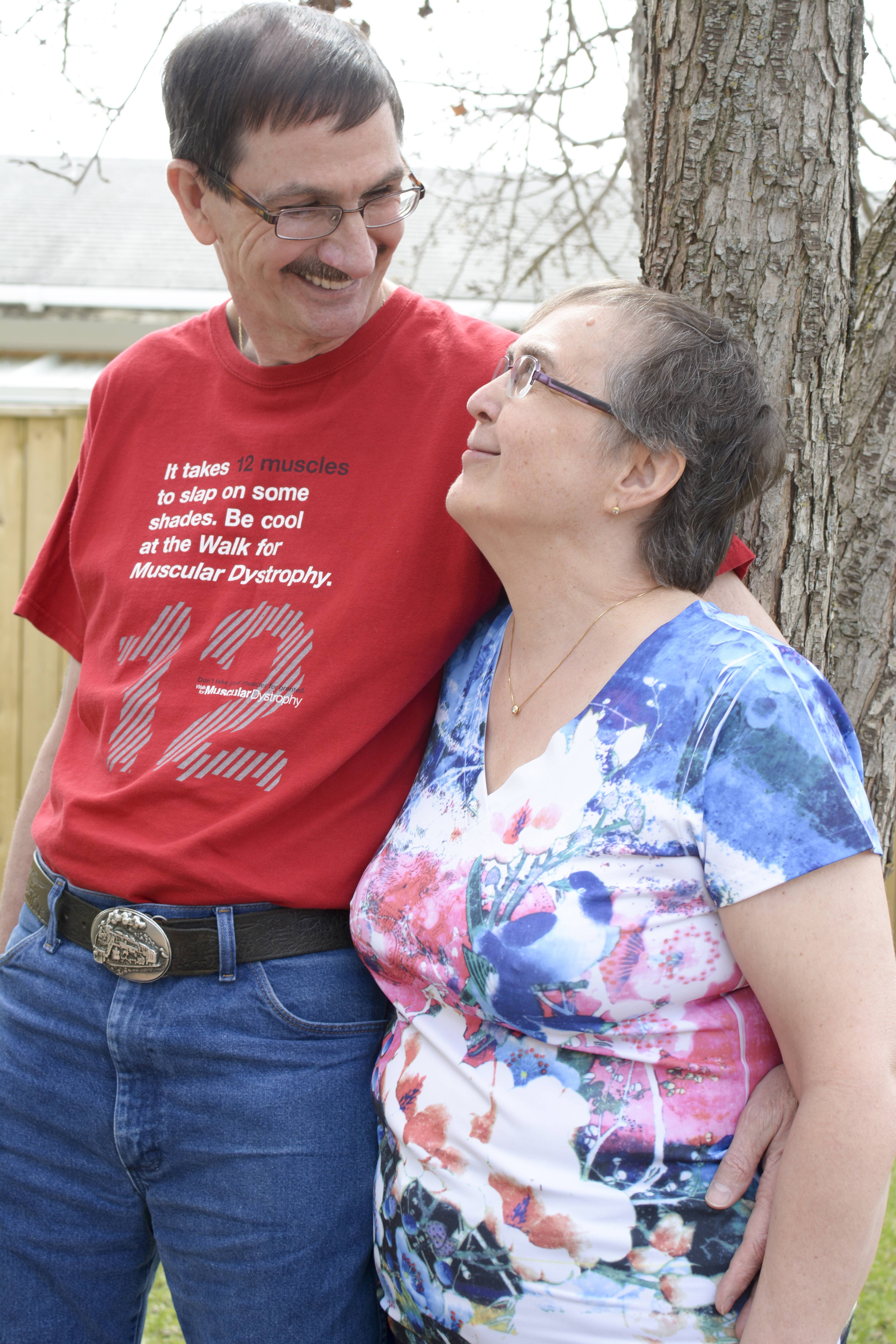With June approaching, organizers are gearing up for the annual fundraising walk for muscular dystrophy which is set for June 7th.
The Safeway Walk for Muscular Dystrophy takes place at McKenzie Trails, starting with registration at 1 p.m.
Muscular dystrophy is the name of a group of genetic muscle disorders that are characterized by progressive weakness and wasting of the voluntary muscles that control body movement. Currently there is no cure.
“Muscular dystrophy covers over 120 different forms of neuro-muscular diseases,” explains Cathy Tessier, who was diagnosed nine years ago with Charcot-Marie-Tooth (CMT) disease.
“The first month after we moved here, I fell on some ice and tore a ligament. It healed, but I ended up with pain that didn’t go away. It was in the process of finding out what was causing that pain that they actually discovered I had CMT.”
Doctors studied her medical history and various tests were carried out, and the diagnosis was made. “Once you have a diagnosis, you can deal with it.”
People with CMT usually have problems with their feet and hands, including feet deformity, foot drop, abnormal sensations and loss of fine motor skills. Not everyone with CMT is affected in the same way.
“Because it’s genetic, I was born with it – so I’ve lived with it all my life,” said Tessier. “Seven years ago, I ended up wearing a leg brace to correct the fact that my feet are dropping.
“People with CMT quite often have a lot of problems walking. We also have a lot of nerve problems, because the nerves are dying away. We can lose a lot of feelings in our hands and our feet because of the neuropathy that comes along with it.
“Some of us also have a lot of nerve pain with it – not everybody, but some of us live with a lot of pain. And the pain can fluctuate from minute to minute.”
Support comes, of course, through family, friends and a local support group – all of who help to carry the burden. “Unfortunately, our spouses have to learn to live with us,” she adds, with an affectionate glance at her husband Ray. “They have to live with us being in pain.”
There is a Red Deer group that meets four times a year plus it hosts social get-togethers.
“But my main support is Ray,” Cathy points out. He is also the current president of the local chapter.
Ray acknowledges the hardships of dealing with his wife’s condition, but his dedication and commitment shines through at every turn.
“It’s changed our lives totally and completely,” he says. “One of the unfortunate effects of that, for example in having to give up our dancing, is that we’ve lost that social network. We’ve lost those friends because you lose that activity you have in common. That’s where the local chapter really helps, because you have that contact. We can hang out, talk and share experiences.”
Cathy agrees, noting how many people in their lives seemed to back away after learning of her diagnosis. “I think a lot of it is that people just don’t know how to handle it.”
But there is support, besides the local chapter. Ray points out that Safeway is a major sponsor and local firefighters always rally to support the cause as well through taking part in the annual walk, for example.
According to Muscular Dystrophy Canada, anyone can be affected by these disorders. And contrary to popular belief, MD is not exclusively a childhood disorder. While some types are first evident in infancy or early childhood, other types may not appear until later in life.
Principal symptoms include progressive muscle wasting, weakness, and loss of function. Common signs include poor balance with frequent falls, difficulty walking and a limited range of movement. As Cathy pointed out, some people have mild neuropathy, while others may have more severe problems with sensation.
The severity and progression vary depending on the exact diagnosis and the individual. Most neuromuscular disorders are progressive, causing the muscles to weaken over time.
Cathy said over the years, it’s been a process of dealing with and treating the symptoms, as there is no cure as of yet. “When my hearing started going, I wore hearing aids. With my feet dropping, they put braces on me. With the pain, they deal with it through medication.
“We are trying to slow the progression of the disease with aqua-fit – that way, I can move my muscles around without doing a lot of impact. It helps to keep the muscle tone – moving the muscles without ‘over moving’ them.
“As different things have come up over the years, we’ve treated everything that is treatable. But mine is a progressive disease – it will eventually put me in a wheelchair. And I’m trying to delay that as much as I can.”
That’s why its critical for folks to support the cause, and one key way they can do that is by signing up for the walk.
“A lot of people don’t know much about muscular dystrophy,” explains Cathy. “It is the forgotten set of diseases.”
Visit www.muscle.ca. Sign up for the walk online at walkformusculardystrophy.ca or call 1-800-661-9312.
editor@reddeerexpress.com



